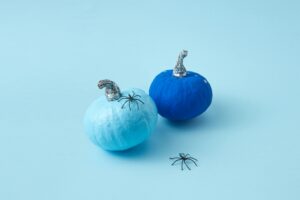Oct. 28. Here are tips from Atrium Health Levine Children’s experts on how to make this Halloween inclusive and fun for all.

Dr. Yasmin Senturias
Dr. Yasmin Senturias, division chief of Atrium Health Levine Children’s Developmental & Behavioral Pediatrics, sees many children with ASD in her practice. About 1 in 44 children has been identified with ASD according to estimates from Centers for Disease Control and Prevention (CDC) Autism and Developmental Disabilities Monitoring (ADDM) Network.
Costumes
“Halloween can be scary or overwhelming for children with ASD,” Senturias says. “Costumes that might not scare most people can frighten them.”
Even wearing a costume can be difficult for kids with ASD because of the sensory issues they can experience.
“If a child with ASD does want to wear a costume, allow them to try it on in advance,” Senturias advises. “Have a ‘dress rehearsal’ ahead of the holiday. You can even role play and show the child pictures of what to expect. Often, children with ASD want to participate in the fun but find it overstimulating.”
Parents of children with ASD should also explain to them in advance what the holiday will entail.
Trick-or-treating
If the child is trick-or-treating or participating in any kind of Halloween activity, and they’re verbal, the parent can tell the child to say “thank you” when receiving a treat. For nonverbal children, have the parent offer thanks on the child’s behalf.
Parents of nonverbal children with ASD may need to offer brief explanations to other children about things that can overstimulate or frighten the child with ASD, such as loud noises, being touched unexpectedly or scary costumes. If the child is sensitive to noise, parents might consider bringing earplugs or another noise-blocking device for the child.
“If you know your child is a runner, limit the number of houses you visit and don’t stray too far from home,” says Senturias.
Blue pumpkins, help at home

Parents can give their child a blue bucket or display a blue pumpkin to let others know their child has ASD or that your house is friendly to children with ASD.
A blue bucket or pumpkin is a signifier that a child has ASD, as the color blue is the symbol of autism awareness.
Parents can give their child a blue bucket or display a blue pumpkin to let others know their child has ASD or that your house is friendly to children with ASD.
Some children with ASD might prefer to stay home and help give out candy in a nontraditional way, like placing candy on the lawn or driveway with a “take one” sign.
Senturias also advises that children with ASD should try to participate in Halloween festivities while it’s still light outside since darkness can make their imaginations can wild and create lots of uncertainties.
As far as candy consumption goes, the usual rules apply about safety and pacing oneself by limiting the amount of candy eaten in a day.




